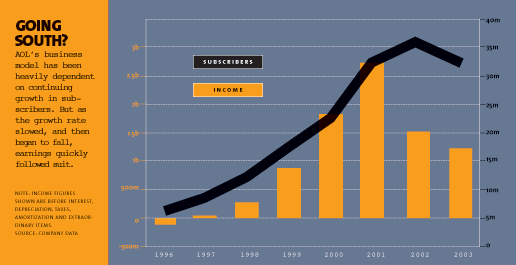
John McKinley, chief technology officer and president, AOL Technologies, recalls vividly the afternoon in late december 1998 when charles schwab corp.’s market valuation reached $25.5 billion, surpassing merrill lynch & co. Inc. For the first time. The upstart brokerage—a pioneer in discount brokerage and online trading—had trumped the much larger and established company, which many years earlier had been equally revolutionary in its relentless ambition to bring wall street to main street. “It was a gray day; there was a lot of angst,” says McKinley, the cto of merrill at the time. “People wanted to jump out of windows.” But McKinley, who had been hired by Merrill just months earlier to upgrade the giant brokerage’s dusty technology and put it in a position to compete for the onslaught of online trading activity that companies like Schwab, E*Trade Financial Corp. and Ameritrade Inc. were getting fat on, wasn’t moved by the Schwab coup.
McKinley had a plan—a step-by-step approach that wouldn’t transform Merrill into a day-trading hothouse but instead would offer customers inexpensive electronic transactions, self-directed, Web-based portfolio management, and online consultation as part of a set of services that included traditional broker-client relationships at a higher fee. His online blueprint, and the company’s internal efforts to integrate and revamp its isolated pockets of disparate technology platforms, was a radical undertaking. It had its share of skeptics in the media and inside the company, too many of whom assumed the lethargic Merrill was doomed to remain a step behind the New Economy.
In the end, though, McKinley’s strategy won out. Now a much more efficient, streamlined and modern organization with a full range of online and offline products, Merrill is back on relatively sound financial footing, with net earnings for the first nine months of 2003 higher than its earnings for all of 2002. Meanwhile, online brokers, some in the red, struggle to squeeze transactions out of a shrinking customer base. Ironically, Schwab has tried to stimulate growth by becoming more like Merrill, providing more product offerings and consultative services for higher-end clients. That hasn’t swayed fickle investors: Five years after topping Merrill, Schwab’s market cap has dropped to less than $16 billion, while Merrill’s has ballooned to more than $50 billion.
Achieving a similar turnaround at AOL—a company that McKinley says has “a lot of analog to the challenges faced by Merrill” in the 1990s—won’t be easy. McKinley left Merrill in February, just before David Komansky, his mentor at the brokerage, stepped down as chairman. When he arrived at AOL in July, the Internet company was at its lowest point in a decade. Still smarting from the turmoil of the Time Warner acquisition, a Securities and Exchange Commission investigation into advertising practices, and the departure of founder Steve Case, AOL’s revenue in the third quarter of 2003 fell 5 percent compared with the same period in 2002, while its operating income dropped 7 percent. Much of this is the result of AOL’s inability to attract broadband customers, who so far have resisted paying an extra $14.95 a month, on top of their DSL or cable modem fees, for AOL’s content. With its fortunes tied to a contracting group of dial-up customers, AOL had 24.7 million U.S. subscribers as of Sept. 30, 2003, a drop of 2 million in 12 months. Fewer than 2.6 million subscribers have signed up for AOL’s broadband service, compared with nearly 4.8 million high-speed cable-modem customers for Comcast Corp.
McKinley is optimistic that the downturn will be short-lived and AOL will solve its severe broadband problems. He says he has a technology strategy, based loosely on what he did at Merrill, to get AOL on solid footing again. The plan, McKinley says, is to “never give you a reason not to use AOL. We want to live through an entire Internet life cycle with our customers, regardless of where they are in their lives. Just like Merrill does with financial products.”
CIO Insight Contributing Editor Jeffrey Rothfeder recently sat down with McKinley in his office at AOL’s headquarters in Dulles, Va., to discuss his successes at Merrill and his new challenges at AOL.
